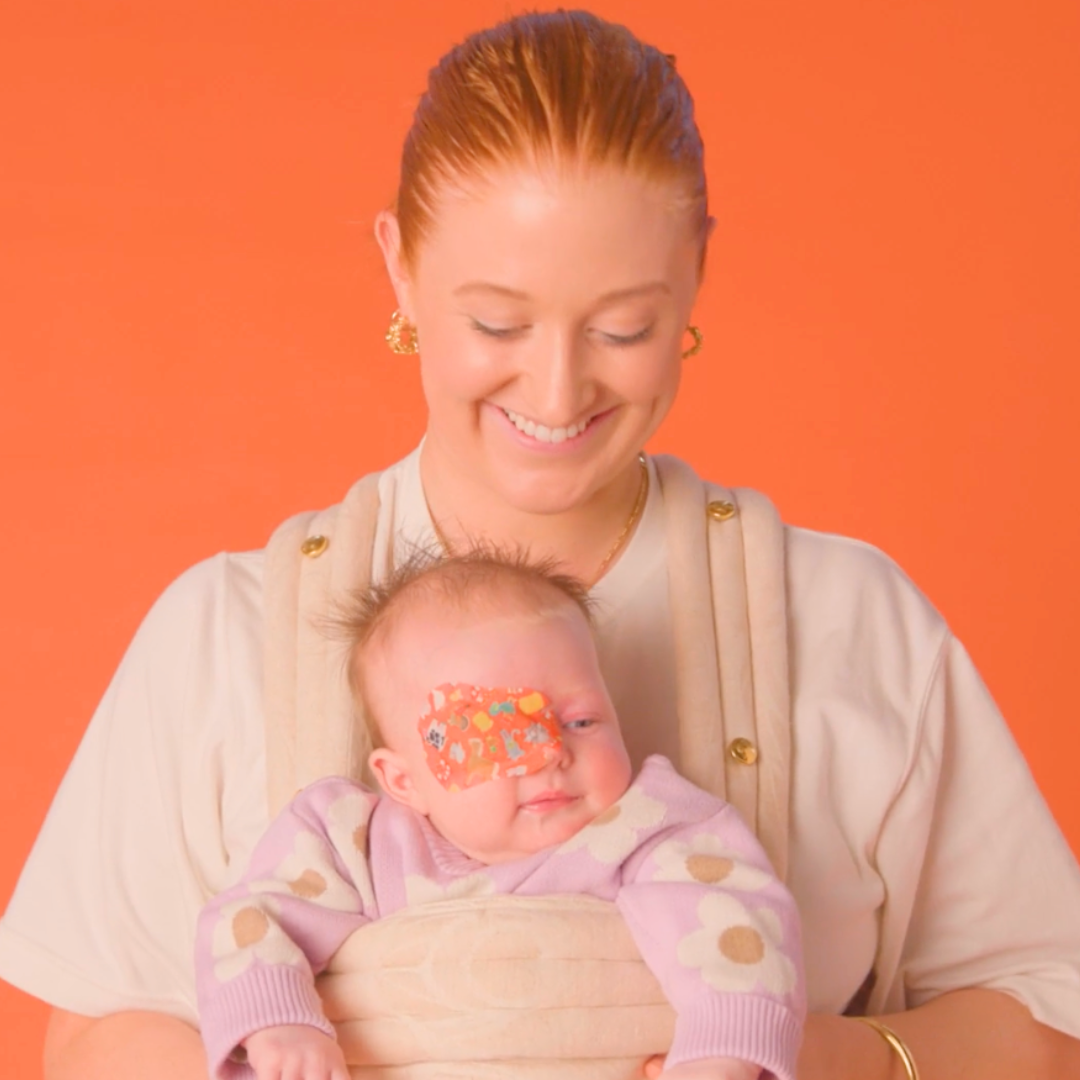Survival Guide for Patching Babies
Patching a baby's eye can be a challenging and emotional experience for both parents and their little ones. That's why we created this survival guide, to provide you with helpful tips and insights to navigate the journey.
Understanding the Process
When patching a baby's eye, it's important to understand that you are covering the eye that they rely on to see, as this allows their "curious" eye to be used by the brain for vision and strengthen the visual pathway, the connection from the eye to the brain that allows us to process vision. Overtime the curious eye will learn how to be a team player with the dominant eye, providing a equal level of vision to the brain. This can feel uncomfortable or distressing for some kids, so crying, fussing and attempting to remove the patch is completely normal. You can learn more about why we patch the eye in this blog.
-
Shorter, More Frequent Sessions: Begin with shorter patching sessions and gradually increase the duration. We recommend starting from 20 minutes and working up from there, as it takes about this long for the brain to recognise that the eye with stronger vision won't provide vision, prompting it to use the curious eye. This incremental approach can help your baby adjust without overwhelming them, until they can reach their prescribed hours of patching. As the vision in the weaker eye improves, the process will become easier.
-
Distraction Techniques: Keep your baby entertained with high-contrast books and toys, a walk outdoors (making sure they stay awake) or even screen time. Black and white, up-close visual engagement is particularly effective for newborns and content like The Wiggles can be a great way to make their patch time fun. The dancing and songs can capture your baby's attention and if it means they hit their prescribed patching hours, that's a win!
-
Feeding and Comfort: Feeding sessions count towards patching time if your baby's unpatched eye is open and engaged. Feeding can be a comforting time, helping your baby adjust to the patch while feeling connected to you.
-
Routine and Consistency: Establish a consistent routine for patching so they become accustomed to the experience and know what to expect.
-
Apply the patch while your baby is sleeping: This can be less distressing as their brain will start adjusting to using the curious eye as they wake up without already receiving clear vision from the other eye. Just remember, the patching hours only count when your baby is actively using their eye to see, so don't count the time while they are asleep.
-
Positive Reinforcement: Praise your baby and offer positive reinforcement during patching sessions. Celebrating small successes will help them associate patching with positive experiences, making the process less daunting.
Encouragement for Parents
We understand that patching a baby's eye can be challenging, especially at such a young age. However, many parents find that with time and persistence, the process becomes easier. Your dedication to your baby's visual development is commendable, and your efforts will make a significant difference in their vision health.
If you have any questions or need further support, don't hesitate to reach out to us or join our community of patching parents. Together, we can make this journey more manageable and successful for both you and your little one.



